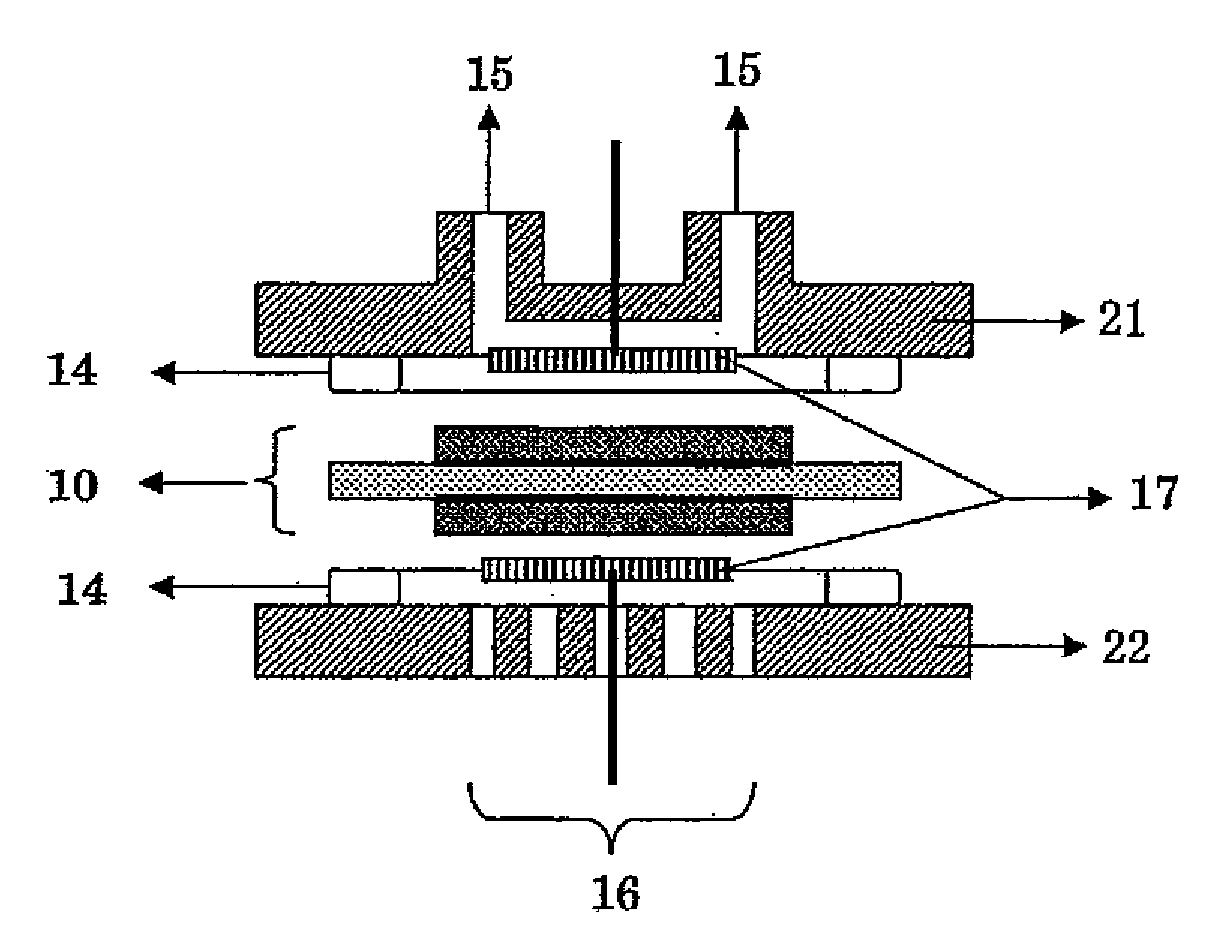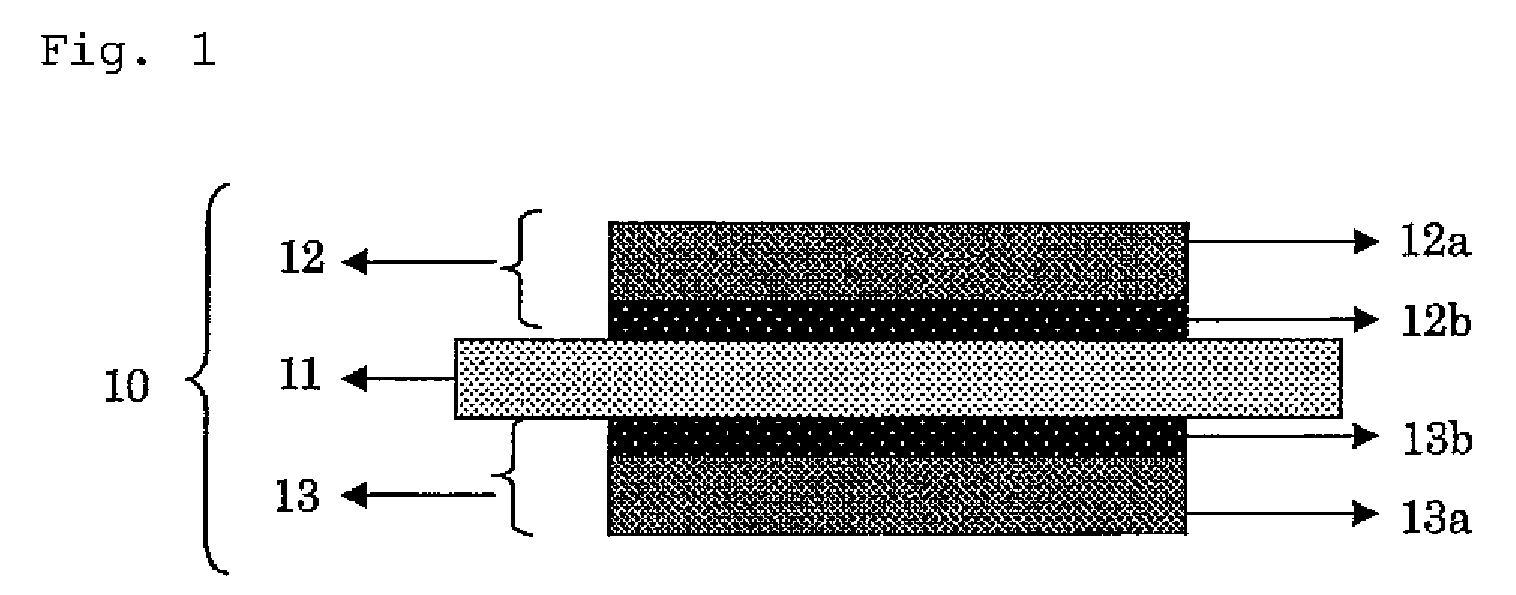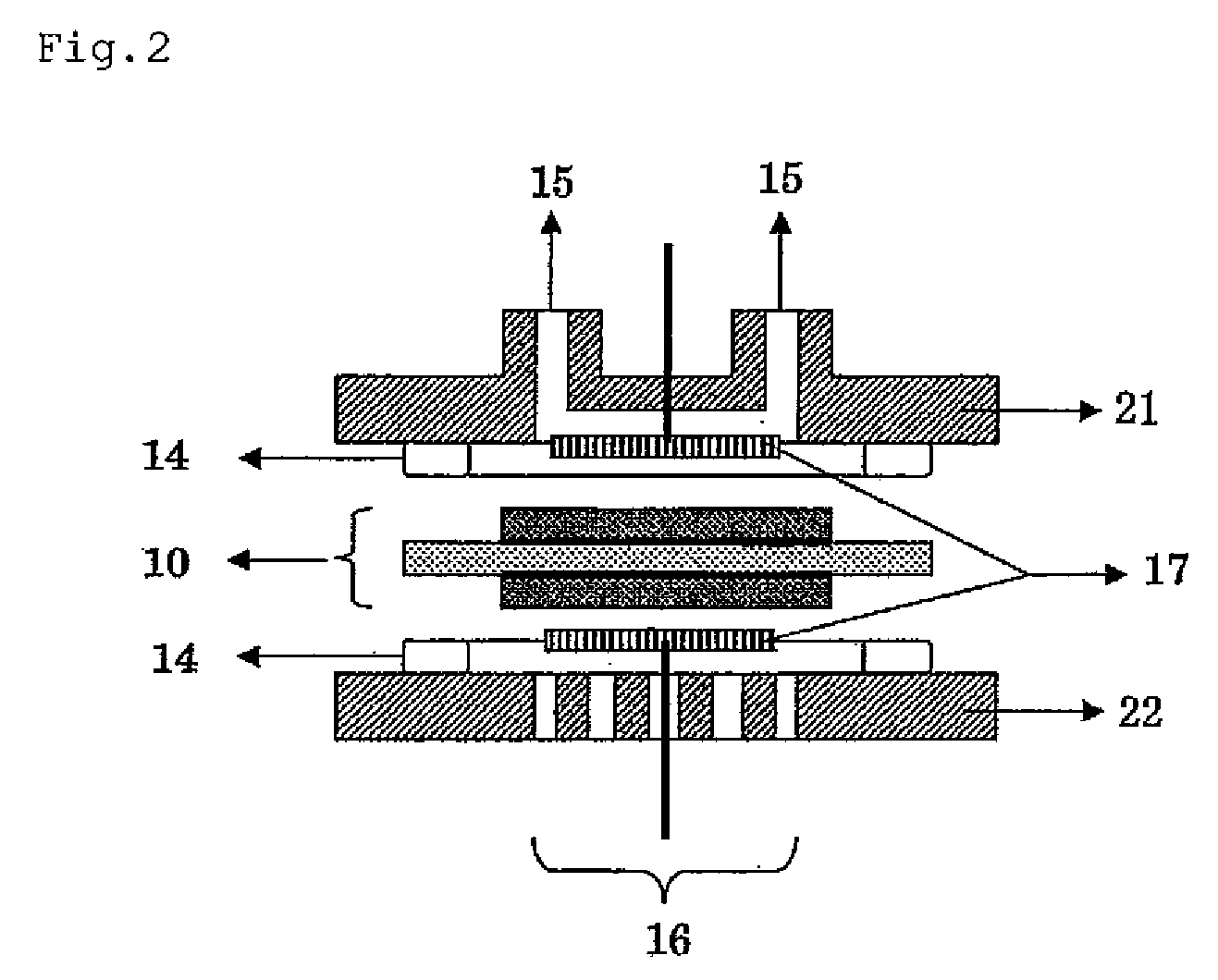Surface-modified carbon material and method for producing the same
a carbon material and surface modification technology, applied in the direction of organic compounds/hydrides/coordination complex catalysts, cell components, physical/chemical process catalysts, etc., can solve the problems of high durability and low heat stability of surface modification carbon materials produced by the foregoing methods, and achieve high heat stability and durability. high
- Summary
- Abstract
- Description
- Claims
- Application Information
AI Technical Summary
Benefits of technology
Problems solved by technology
Method used
Image
Examples
example 1
Production of Surface-Modified Carbon Material (1) Using Benzyne:
[0122]A surface-modified carbon material (1) was produced using a benzyne. Specifically, trifluoromethanesulfonic acid 2-(trimethylsilyl)-4-chlorobenzene (2.77 g) synthesized according to Angew. Chem. Int. Ed., Vol. 37, pages 2659 to 2661 (1998) was dissolved in 100 mL of acetonitrile. To this solution, 1.00 g of ketjen black (EC600JD, manufactured by Lion Corporation) having a specific surface area of 800 m2 / g and 2.54 g of cesium fluoride were added. This mixture was stirred at 80° C. for 8 hours; and a precipitate was collected by filtration, washed with water and acetone and then dried in vacuo to obtain 1.15 g of a surface-modified carbon material (1). As a result of analysis using fluorescent X-rays, it was revealed that the surface-modified carbon material (1) contained 3.9% of a chlorine atom. Accordingly, it was noted that a chlorophenyl group was contained in an amount of 1.09 mmoles per gram of the surface-m...
example 2
Production of Surface-Modified Carbon Material (2) Using Benzyne:
[0123]A surface-modified carbon material (2) was produced using a benzyne. Specifically, 2.77 g of trifluoromethanesulfonic acid 2-(trimethylsilyl)-4-chlorobenzene was dissolved in 100 mL of acetonitrile. To this solution, 1.00 g of DENKA BLACK (a 100% pressed product, manufactured by Denki Kakgaku Kogyo Kabushiki Kaisha) having a specific surface area of 66 m2 / g and 2.54 g of cesium fluoride were added. This mixture was stirred at 80° C. for 8 hours; and a precipitate was collected by filtration, washed with water and acetone and then dried in vacuo to obtain 0.97 g of a surface-modified carbon material (2). As a result of analysis using fluorescent X-rays, it was revealed that the surface-modified carbon material (2) contained 0.75% of a chlorine atom. Accordingly, it was noted that a chlorophenyl group was contained in an amount of 0.21 mmoles per gram of the surface-modified carbon material.
example 3
[0126]As to Examples 1 and 2 and Comparative Examples 1 and 2, when the temperature was raised from room temperature to 550° C. at a rate of 10° C. / min, thermo-gravimetric / differential thermal analysis (TG / DTA) was carried out in a nitrogen gas atmosphere having a purity of 99.99% or more. A weight loss (% by mass) at from 150 to 250° C. and a value obtained by dividing a weight loss (% by mass) by a specific surface area (m2 / g) are shown in Table 1.
TABLE 1Weight lossWeight loss (% by mass) / (% by mass)specific surface area (m2 / g)Example 10.780.98 × 10−3Example 20.060.97 × 10−3Comparative Example 11.571.96 × 10−3Comparative Example 20.142.18 × 10−3
[0127]As is clear from Table 1, it was confirmed that as compared with Comparative Examples 1 and 2 in which the modification was carried out using a diazonium salt, Examples 1 and 2 are low in the weight loss per specific surface area (m2 / g) and thermally stable in a region of from 150 to 250° C. These carbon materials can be used even at ...
PUM
| Property | Measurement | Unit |
|---|---|---|
| temperature | aaaaa | aaaaa |
| specific surface area | aaaaa | aaaaa |
| specific surface area | aaaaa | aaaaa |
Abstract
Description
Claims
Application Information
 Login to View More
Login to View More - R&D
- Intellectual Property
- Life Sciences
- Materials
- Tech Scout
- Unparalleled Data Quality
- Higher Quality Content
- 60% Fewer Hallucinations
Browse by: Latest US Patents, China's latest patents, Technical Efficacy Thesaurus, Application Domain, Technology Topic, Popular Technical Reports.
© 2025 PatSnap. All rights reserved.Legal|Privacy policy|Modern Slavery Act Transparency Statement|Sitemap|About US| Contact US: help@patsnap.com



